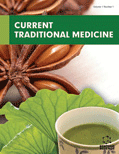
Abstract
Hippophae salicifolia, belonging to the family Elaeagnaceae, is a thorny shrub, and shows actinorhizal habit. The species prefers a habitat of temperate regions in Europe and Asia. In India, it is distributed in the Himalayan region of Uttarakhand, Himachal Pradesh, Jammu and Kashmir, and the North-Eastern parts. The oil, fruits, leaves, and bark of Hippophae species have a pronounced use in ethnomedicines, nutritional food, cosmetics, nitrogen-fixing in soil, water conservation and as a fuel source. The aim of this review is to provide updated, comprehensive, and classified information on the traditional uses, phytochemistry, pharmacological and toxicological research carried out on H. salicifolia. This will help researchers to explore its therapeutic potential and examine future research possibilities. The chemical composition of this shrub comprises minerals, vitamins, flavonoids, flavonoids glycosides, polyunsaturated fatty acids, sugars, carotenoids, and nucleobases. Pharmacological studies demonstrated that the extracts prepared from leaves, barks, and berries along with fixed oil of this species are useful as anti-oxidant, anti-inflammatory, anti-cancer, anti-diabetic, anti-depressant, anti-microbial, adaptogenic, and wound healing agent. The results of the toxicity study of H. salicifolia extracts did not show any significant acute toxicity in experimental animals. The abundance of phenolic compounds, minerals, and fatty acids within the different parts of this plant prompted researchers to isolate and characterize the phytoconstituents which are responsible for its therapeutic uses.
Keywords: Sea buckthorn, Hippophae, Hippophae salicifolia, traditional medicine, pharmacological activities, phytoconstituents.
[PMID: 21046972]
[http://dx.doi.org/10.1016/S1359-6446(99)01443-9] [PMID: 10652450]
[http://dx.doi.org/10.1038/nbt1008-1077] [PMID: 18846070]
[http://dx.doi.org/10.1016/j.ejmech.2011.07.057] [PMID: 21889825]
[http://dx.doi.org/10.1039/c4ra00227j]
[http://dx.doi.org/10.9734/jpri/2021/v33i28A31524]
[http://dx.doi.org/10.1080/13543776.2019.1648434]
[http://dx.doi.org/10.1007/s13199-009-0033-y]
[http://dx.doi.org/10.21273/HORTTECH.6.4.370]
[http://dx.doi.org/10.1016/j.jep.2009.10.037] [PMID: 19900529]
[http://dx.doi.org/10.3390/cosmetics4040040]
[http://dx.doi.org/10.1016/S0924-2244(02)00136-X]
[http://dx.doi.org/10.1016/j.foodres.2011.03.002]
[http://dx.doi.org/10.1021/jf020421v] [PMID: 12358492]
[http://dx.doi.org/10.1111/j.1365-2621.1980.tb02616.x]
[http://dx.doi.org/10.1021/jf010813m] [PMID: 11714369]
[http://dx.doi.org/10.1021/jf802599f] [PMID: 19125686]
[http://dx.doi.org/10.1016/j.foodchem.2013.09.083] [PMID: 24206678]
[http://dx.doi.org/10.1016/j.fct.2010.09.019] [PMID: 20854873]
[http://dx.doi.org/10.1007/s11010-005-7095-9] [PMID: 16180095]
[http://dx.doi.org/10.1016/j.fct.2010.06.018] [PMID: 20558226]
[http://dx.doi.org/10.1023/A:1019905211392] [PMID: 12349895]
[http://dx.doi.org/10.1007/s11676-009-0005-3]
[http://dx.doi.org/10.15835/nbha46211155]
[http://dx.doi.org/10.1007/s11746-006-1213-z]
[http://dx.doi.org/10.1021/jf981331m] [PMID: 10552673]
[http://dx.doi.org/10.1071/FP11016] [PMID: 32480925]
[PMID: 25332713]
[http://dx.doi.org/10.1248/bpb.25.1133] [PMID: 12230103]
[http://dx.doi.org/10.3923/jbs.2004.687.693]
[http://dx.doi.org/10.1016/j.foodchem.2004.07.009]
[http://dx.doi.org/10.1016/j.bse.2003.11.010]
[http://dx.doi.org/10.1186/1746-4269-6-3] [PMID: 20102631]
[http://dx.doi.org/10.1016/S1570-0232(04)00720-2] [PMID: 15556505]
[http://dx.doi.org/10.1016/j.foodchem.2016.09.145] [PMID: 27855899]
[http://dx.doi.org/10.1038/s41598-017-01722-3] [PMID: 28484246]
[http://dx.doi.org/10.1021/jf103130a] [PMID: 21142100]
[http://dx.doi.org/10.1016/j.jff.2017.08.019]
[http://dx.doi.org/10.5530/pj.2017.3.56]
[http://dx.doi.org/10.1038/sj.onc.1205996] [PMID: 12483510]
[http://dx.doi.org/10.1016/S0022-2828(84)80615-X] [PMID: 6737484]
[http://dx.doi.org/10.1080/10826076.2017.1283517]
[http://dx.doi.org/10.4103/0975-7406.172663] [PMID: 27413349]
[http://dx.doi.org/10.1007/s12038-013-9367-y] [PMID: 24287660]
[http://dx.doi.org/10.1007/BF01630479] [PMID: 7664022]
[http://dx.doi.org/10.4103/pr.pr_71_18]
[http://dx.doi.org/10.1084/jem.115.3.597] [PMID: 14482110]
[http://dx.doi.org/10.1007/BF00428203] [PMID: 3923523]
[http://dx.doi.org/10.1016/0378-8741(90)90038-U] [PMID: 2214813]
[http://dx.doi.org/10.1007/s12298-012-0133-7] [PMID: 24082501]
[http://dx.doi.org/10.1007/s00484-014-0925-2] [PMID: 25384585]
[http://dx.doi.org/10.1007/s12192-015-0603-2] [PMID: 26045201]
[http://dx.doi.org/10.1177/1534734605277401] [PMID: 15911921]
[http://dx.doi.org/10.1016/j.ijbiomac.2017.03.014] [PMID: 28283451]
[http://dx.doi.org/10.5455/spatula.20141103125759]
[PMID: 27533935]
 14
14 2
2


























